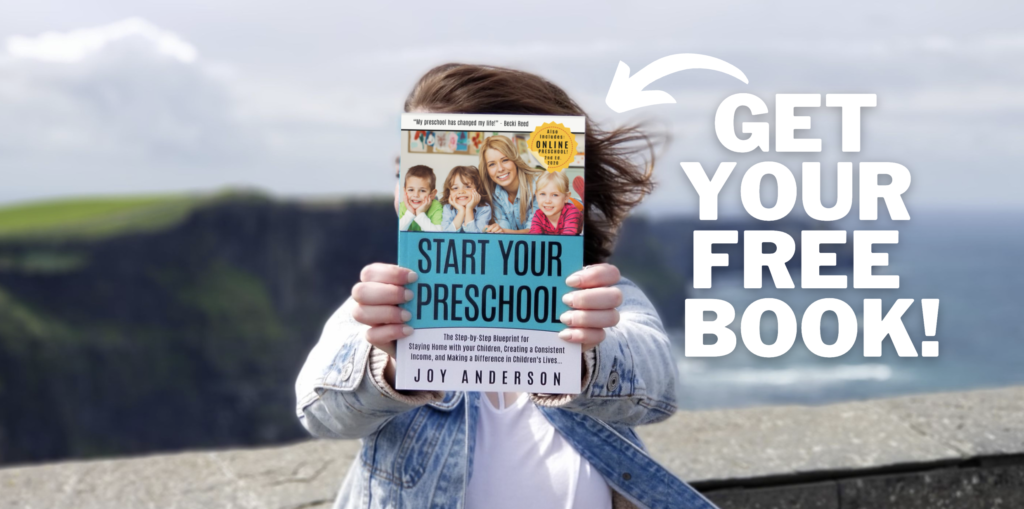It’s the age-old debate, and people get very heated on both sides of the fence about whether process or product should be banished from the classroom. Join us today as we share a different viewpoint: both are vital in today’s preschool classrooms.
My guest is Maggy Woodley – she is the mother of two amazing children and she runs the Red Ted Art website. Maggy shares her favorite easy crafts for kids and has seen incredible results with her product-based activities.
Today she shares her insights so we can understand that both process and product can serve a great role in your classroom!
How and Why Maggy Created Red Ted Art
It all started 11 years ago. Maggy was a SAHM with a toddler and a baby. She had a passion for crafts, but at the same time, she knew she didn’t want to go back to traditional employment. Her new business had to reflect her passion and also bring additional income.
Arts and crafts seemed perfect – Maggy had a lot of great memories creating art with her family and friends. She also wanted that for kids.
In the beginning, she was all about experimenting and seeing what works. A lot of her early crafts had books and crafts combined, which Maggy found was great for preschoolers. As her kids grew up, the crafts also developed – today she has a lot of content for older kids as well.
The whole thing has been a great journey for Maggy. She’s come to think of herself as a craft aunty, and over the years, she’s learned a lot about kids through feedback from parents. Her mission is to encourage the next generation to be creative and get inspired!
Product vs. Process: What’s It All About?
The main (apparent) difference between the product and process-based activities is that product-based work requires certain steps to get to a predetermined result. Many believe this approach limits kids, but is that really true? Do we need to banish one or the other?
Maggy believes there is a place for both product and process in the classroom. For her, a product-orientated activity is about providing skill to a child. The main question in her mind is: At which point do you just let children have the freedom and at which point you start teaching them something?
Everyone has a different opinion on what the right time is, but Maggy thinks you can always sprinkle in a bit of skill in whatever you’re doing with kids. Whenever the kids are creating something, they learn a lot in the process: which glue works better, which colors mix well. Without directions, kids usually end up mixing colors into a brown – Maggy is not convinced how much they learn that way.
It goes without saying that kids need the freedom to explore, but some directions are always welcome. Her approach is to present the product activity with steps but let the children get creative with that.
There’s a delicate balance involved here: How much do you want to correct kids? In Maggy’s view, if they’re stitching something and it’s not coming together, it’s OK to help out. But if the instructions say the cat should be grey and the kid wants to color it purple, you should absolutely allow them to get creative there.
If you’re in the purely process camp, sometimes you think that the product people are saying to kids: No, you must do everything exactly as I tell you. This is a huge misunderstanding because the product-oriented activities work in a different way. You’re demonstrating how something works and the kids should follow that process, but they are also allowed a lot of creativity to make the end-product their own.
It’s not about the product – it’s about giving the kids a toolset to explore and create other things based on what they’ve learned!
There’s a Place for Everything – All Kids Are Different
Both parents and teachers need to strike a balance between teaching and interfering in the creative process. There’s a time to play and there’s a time to follow directions – both approaches teach kids valuable skills.
Especially when it comes to arts and crafts, It’s important to understand that all kids are different. Some kids love following directions! Some love to let their creativity run wild. Your approach should take the kids’ personalities into account. Product-oriented activities fill kids with a sense of accomplishment, they learn fine motor skills, they learn how to make something, they get all these skills. Process-based activities let kids explore, find their voice, their creativity, and feel supported in their expression. Some kids will lean harder one way, but usually, kids need a bit of both to thrive.
It’s All Serving Development
This debate is mostly focused on arts, but if we back out for a second, we see there’s a lot of product-based activities everywhere in the classroom. From counting to learning letters, it’s all about following certain steps. It’s all development.
Crafts are not just about the final product – they are a learning opportunity and also a fun activity most kids enjoy. We should look at arts and crafts as a different set of curriculum objectives that all serve to give kids skills.
Everything has a place in the classroom as long as you’re letting kids explore their skills, thrive in what they do well, and improve on skills that they struggle with.
Additional Resources:
- Follow Maggy and get her books: https://www.redtedart.com
- Head over to Apple Podcasts to hear the full interview. While you’re there, please leave us a rating and a review. (We hope we’ve earned your 5 stars!)
- Start my FREE “7 Students in 7 Days” Challenge”
- Get my FREE “Start Your Preschool” Book (+$7.95 s&h)
